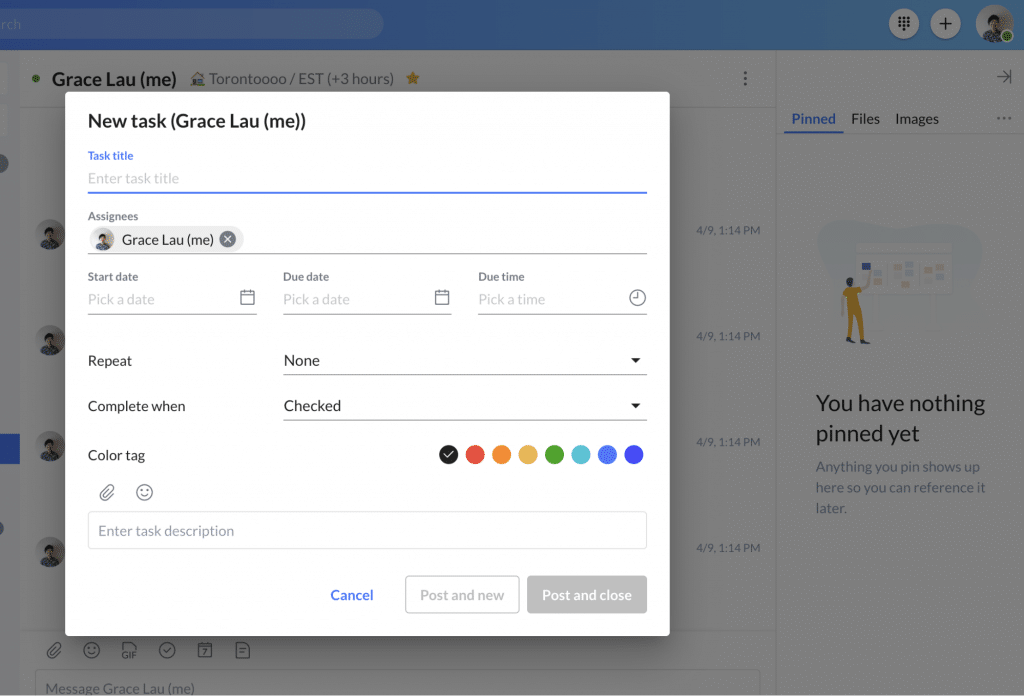The resignation of an employee is rarely a cause for celebration. For managers or small business owners, each employee is an important part of their team, and even if it’s not a really senior employee leaving, you’re probably going to feel that loss.
In some cases, you might be able to convince your employee to stay. But people can resign for countless reasons, and often, it’s just not within your control. Your employee may have found a job that pays more than you can afford, they might have to move cities, or perhaps there just isn’t enough upward room for them to grow.
Nonetheless, the show must go on. If you have strong processes and open communication in place, you’ll have a much easier time handling an employee’s departure.
In this post, we’ll look at:
- A checklist for when an employee resigns
- What to do when a key employee resigns
- What to do when an employee quits without notice
- How to inform your staff of an employee’s resignation
- How to decrease turnover by increasing communication
🔍 Are you thinking about purchasing a new communication tool and unsure how to get started? Here’s a checklist to help you pick the right one for your business.
When an employee resigns: a checklist
Every time an employee leaves, there should be a set process laid out for you to follow. Not sure where to start? Here’s a handy checklist.
1. Review your knowledge
Is this employee a specialist? Do they know how to do something that nobody else on your team can do?
Consider this a cautionary tale about the dangers of working in silos and not practicing effective teamwork: a few years ago, I was working at a business software company and sat near a part-time student. This student was quiet and kept to herself; her main job was to integrate secondary source information feeds with platforms for clients. Her boss had departed the company months ago, leaving her as the only integration specialist. Integration requests came in waves—sometimes, none would come in for weeks.
At last, the student graduated and handed in her resignation. She had more than enough time to wrap up her existing jobs, and during her notice period, no new integration requests came in.
Reading this now, what happened next should come as no surprise. But somehow, both the IT and development departments missed the fact that this part-time student was the only person who knew how to integrate secondary source feeds. A week after she left, a new client sent three integration requests, and nobody knew how to do it. This delay frustrated the client and caused a lot of internal finger-pointing.
So when an employee resigns, find out what they know and see if anyone else knows it. Maybe they have unique technical skills—if so, they can document them before leaving. Maybe they have in-depth knowledge of a client—in this case, they should leave that knowledge with you.
Having a collaboration hub is incredibly useful in these situations. For example, RingCentral Engage Digital™ can merge your customers’ digital and social media accounts into a complete customer profile, giving your team access to communication records across a range of communication channels (like phone calls, emails, or SMS text). Here’s a quick look at how it works:
So, if someone quits, this gives your next account manager for that client a major advantage after the handover: despite being a new contact, they’ll have all the information they need to help their client right at their fingertips.
2. Decide how to let the other employees know
Before making any announcements, talk to the departing employee about how they’d like their resignation to be communicated. Some employees may want to tell their colleagues themselves, especially if they’re close on a personal level.
Other times, they may prefer if you just send out an email instead of announcing the departure at a meeting—it depends on how comfortable they are with the spotlight.
Keep your team focused and engaged with these employee engagement apps.
3. Evaluate and distribute responsibilities
Even with a notice period, you likely won’t find a replacement right away. If you or someone on your team has effective teamwork skills, put those to work.
Talk to your employee about what they can finish before they go, and what they can pass on to other employees. They might have a good idea of who’s best suited to continue their workflows.
The right team planning software will make this job a lot easier. If you’ve already got a communication tool in place, you can decide who to add to each task to make sure nothing’s been left out. This way, the departing employee can collaborate with each newly assigned employee to pass on their existing tasks.
For example, RingCentral’s team messaging platform lets you send each other messages, have video conferences, and also call each other, all from the same app:
And it comes with task management features too, which let you create and assign tasks with due dates to your teammates:
A comprehensive view of what they’ve been working on will help you streamline the transition process. Which leads us to our next point…
4. Decide if you need to hire a replacement
A departure also gives you the chance to re-evaluate your business. As you divide the responsibilities amongst your remaining employees, you might realize that you’re capable of handling the loss without hiring a replacement.
Or, maybe you can hire someone in a slightly different (or even entirely different) capacity and have the new starter focus on different aspects of your business.
On the other hand, the need for a replacement might be glaring. If that’s the case, it’s time to set up a job posting and see if your network can provide good candidates.
5. Conduct an exit interview
We can’t stress this enough—when an employee gives their notice, there should always be an exit interview. This interview is a great opportunity to get honest feedback about your business, your colleagues, and your own leadership style.
(Remember, leadership plays a huge role in employee engagement.)
An employee who’s already given their notice will find it easier to be candid. If they have problems that they haven’t previously brought up, this is when you’ll hear them. This means that sometimes during exit interviews, you can end up getting information that isn’t easy to hear. So, go into the exit interview with an open mind, and try to use whatever they tell you to make your business better.
What to do when a key employee resigns
The departure of a key employee presents extra challenges—especially if their responsibilities included managing other employees.
If this is an employee that you really count on, you might be tempted to offer them a raise. Before doing this, try to find out if money is one of the main reasons for their departure. If so, and they’re being paid below the going rate for their job, then they might have a valid concern.
But if it’s not the salary, then offering more money might not be the best move. After all, it’s best to have employees who are motivated by more than just a paycheck.
In any case, when a key employee resigns, you should still follow the checklist above. But if they manage other people, you should add a box: assigning an interim manager. This shows your employees that business has to continue and that they must remain accountable.
Want your employees to stick around? Here are employee retention strategies that are effective—and affordable.
What to do when an employee quits without notice
Hopefully, this will be a rare circumstance. But we can’t write an article about employees leaving and not touch on this subject.
There are two main reasons for an employee to quit without notice. The first is personal circumstances. They might be going through an extremely tough time, such as the passing of a friend or family member.
If this is the case, and they don’t want to simply take a leave of absence, then offer your support and condolences and let them go with grace.
The second main reason for this is that the employee is exceedingly unhappy and just wants out.
An essential part of managing employees is staying in touch with their needs and supporting them as best as you can. While no manager can be perfect, if this does happen to you, you might want to take a closer look at your management style and figure out where you went wrong.
If lack of communication is a problem, increase communication and touchpoints with your other employees so that you can prevent this situation from happening again.
With no notice period, there will likely be a short-term burden on your team. Apologize for this and make sure your remaining employees know how much you value their extra effort.
While you can try to expedite the hiring process to make it as fast as possible, your best bet might be a temporary worker who can help pick up the slack until you find a new permanent employee.
How to inform your staff of an employee resigning
As we’ve mentioned in the checklist, talk to your departing employee before you make any communications or announcements. Respect their wishes about how they’d like the news to be communicated, and also respect that they may not want the full story becoming public.
Maybe they have personal reasons that they’d rather keep to themselves, or they’re going to work for another company and don’t want everyone to know about it.
Keep communication positive, and offer your best wishes to the departing employee. Even if you’re unhappy about their departure, you shouldn’t let everyone know: they were a valued team member, and their presence had an impact on your business.
And finally, as a show of gratitude, a gesture of appreciation is also important. This can take the form of a card, a going-away present, or even a get-together or party. The departure of an employee can be sad, but it should also be celebrated as their next step.
One key way to lower the chances of an employee resigning…
You won’t always be able to prevent employees from leaving. But a collaborative culture and good communication are essential to keeping up employee morale, and happy employees are less likely to leave.
Keeping open lines of communication means more than just talking to your employees. It should be easy to talk to and connect with them easily—whether they’re in the same building as you or in a different country.
Farewells are bittersweet things. While you don’t have to look forward to them, they also shouldn’t cause chaos at your workplace. Next time an employee hands in their notice, go through your checklist; hopefully it will make the transition a little easier.
Originally published Apr 01, 2020, updated Mar 16, 2021





